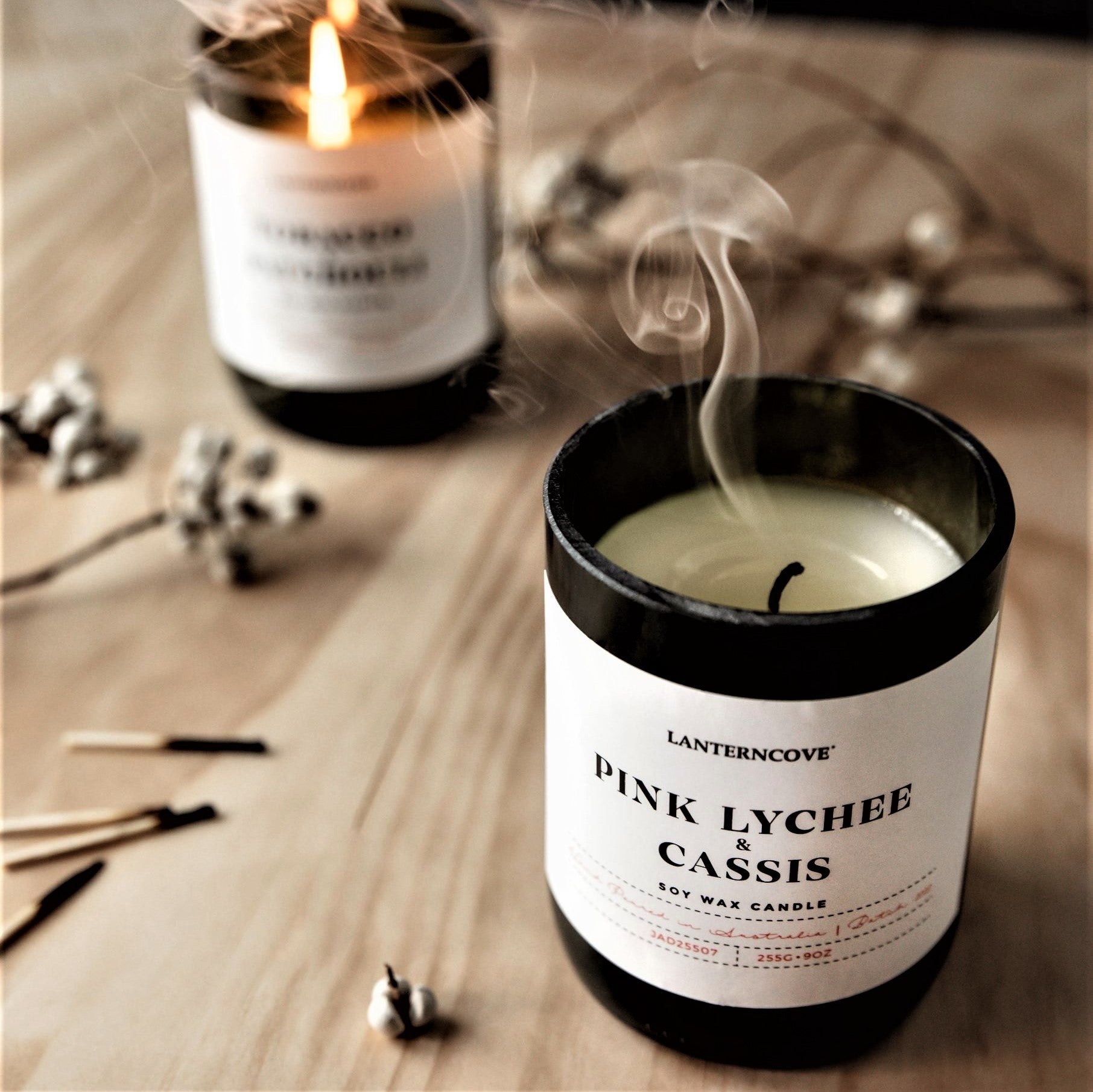Learn the Magic of Crystal Soy Candles and Home Fragrance
Learn the Magic of Crystal Soy Candles and Home Fragrance
Blog Article
From Wick to Wax: Recognizing the Chemistry Behind Soy Wax Candles and Their Environmental Effect
As we illuminate our areas with the cozy glow of candles, there lies a world of complex chemistry behind the apparently basic act of lighting a soy wax candle light. The choice between soy and paraffin wax extends past plain visual appeals, diving right into the realm of environmental influence and the very structure of the products. Comprehending the molecular framework of soy wax and its burning process drops light on the exhausts released into our surroundings. Join us as we untangle the scientific ins and outs behind soy wax candle lights and explore their ramifications on our setting.
Soy Wax Vs. Paraffin Wax
When contrasting soy wax and paraffin wax for candle light production, it is important to recognize the distinct characteristics and benefits of each material. Soy wax is a natural, sustainable resource originated from soybean oil, making it eco-friendly and biodegradable - soy wax candles. In contrast, paraffin wax is a byproduct of petroleum refining, which raises concerns about its ecological influence and sustainability
Soy wax candle lights melt cleaner and send out much less soot compared to paraffin wax candles, making them a much healthier selection for interior air high quality. Furthermore, soy wax has a lower melting point, permitting a longer-lasting candle that spreads scent more successfully. Paraffin wax, on the other hand, tends to melt faster and much less easily, possibly launching harmful chemicals right into the air.
From a sustainability point of view, soy wax is preferred for its biodegradability and eco-friendly sourcing, straightening with the expanding consumer choice for environmentally conscious products. While paraffin wax has been a conventional choice in candle light making because of its affordability and convenience of usage, the shift in the direction of environment-friendly alternatives like soy wax is obtaining energy in the industry.
Chemical Make-up of Soy Wax

Combustion Refine in Soy Candles
The chemical structure of soy wax directly influences the burning procedure in soy candles, affecting elements such as burn time, aroma launch, and ecological effect. When a soy candle is lit, the warm from the fire thaws the wax near the wick. This fluid wax is then attracted up the wick as a result of capillary action. As the fluid wax reaches the fire, it vaporizes and undergoes combustion. The combustion procedure includes the vaporized hydrocarbons in the wax responding with oxygen in the air to generate warmth, light, water vapor, and carbon dioxide.
The combustion efficiency of soy candles is influenced by the purity of the soy wax and the top quality of the wick. A clean-burning soy candle with a correctly sized wick will certainly generate view website a stable fire and minimize residue formation. This not just prolongs the burn time of the candle however additionally enhances the launch of fragrances. Furthermore, soy wax candle lights have a lower ecological influence compared to paraffin candle lights due to their eco-friendly and eco-friendly nature.

Ecological Benefits of Soy Wax

Taken into consideration a lasting option to typical paraffin wax, soy wax supplies notable look these up ecological benefits that make it a prominent selection amongst eco-conscious consumers. One significant advantage of soy wax is its renewable sourcing. Soy wax is originated from soybean oil, which is predominantly grown in the USA. The growing of soybeans assists support local farmers and lowers the dependence on non-renewable nonrenewable fuel sources utilized in paraffin wax production. In addition, soy wax is eco-friendly, indicating it breaks down naturally without launching unsafe contaminants into the environment. This particular makes soy wax candles a more eco pleasant choice compared to paraffin wax candle lights, which are made from petroleum, a non-renewable source. Additionally, soy wax burns cleaner and produces much less soot than paraffin wax, adding to far better indoor air top quality and lowering the requirement for cleaning and upkeep. In general, the ecological benefits of soy wax straighten with the growing need for sustainable and eco-friendly items on the market.
Recycling and Disposal Factors To Consider
Reusing and correct disposal of soy wax candle lights play a crucial role in maintaining ecological sustainability and reducing waste in communities and households. When it comes to reusing soy wax candle lights, the very first step is to ensure that the candle light has actually shed completely.

In terms of disposal, if recycling is not an option, soy wax candle lights are eco-friendly and can be safely thrown away in a lot of home waste systems. It is constantly suggested to check with neighborhood recycling centers or waste administration services for certain guidelines on candle light disposal to guarantee correct handling and ecological protection.
Verdict
In verdict, the chemistry behind soy wax candles exposes their ecological benefits over paraffin wax candles. Soy wax, obtained from soybean oil, burns cleaner and generates much less soot when compared to paraffin wax.
When contrasting soy wax and paraffin wax for candle light production, it is vital to recognize the distinct qualities and advantages of each product (home fragrance).Soy wax candle lights melt cleaner and give website link off less residue contrasted to paraffin wax candle lights, making them a much healthier selection for indoor air quality.Thought about a sustainable option to standard paraffin wax, soy wax supplies remarkable environmental benefits that make it a popular choice among eco-conscious consumers. Soy wax burns cleaner and produces much less residue than paraffin wax, adding to far better interior air top quality and reducing the need for cleaning and upkeep.In verdict, the chemistry behind soy wax candle lights exposes their environmental advantages over paraffin wax candle lights
Report this page